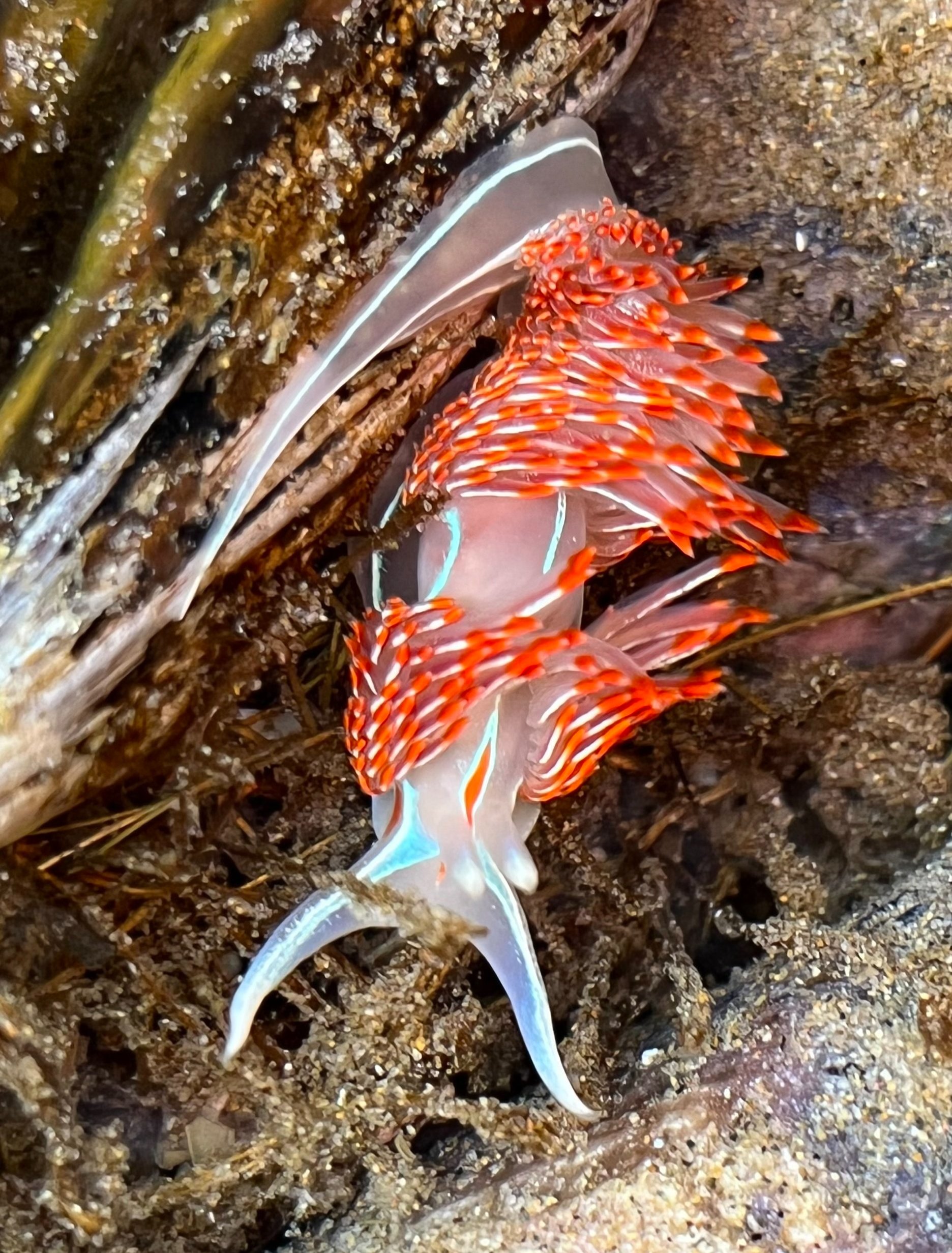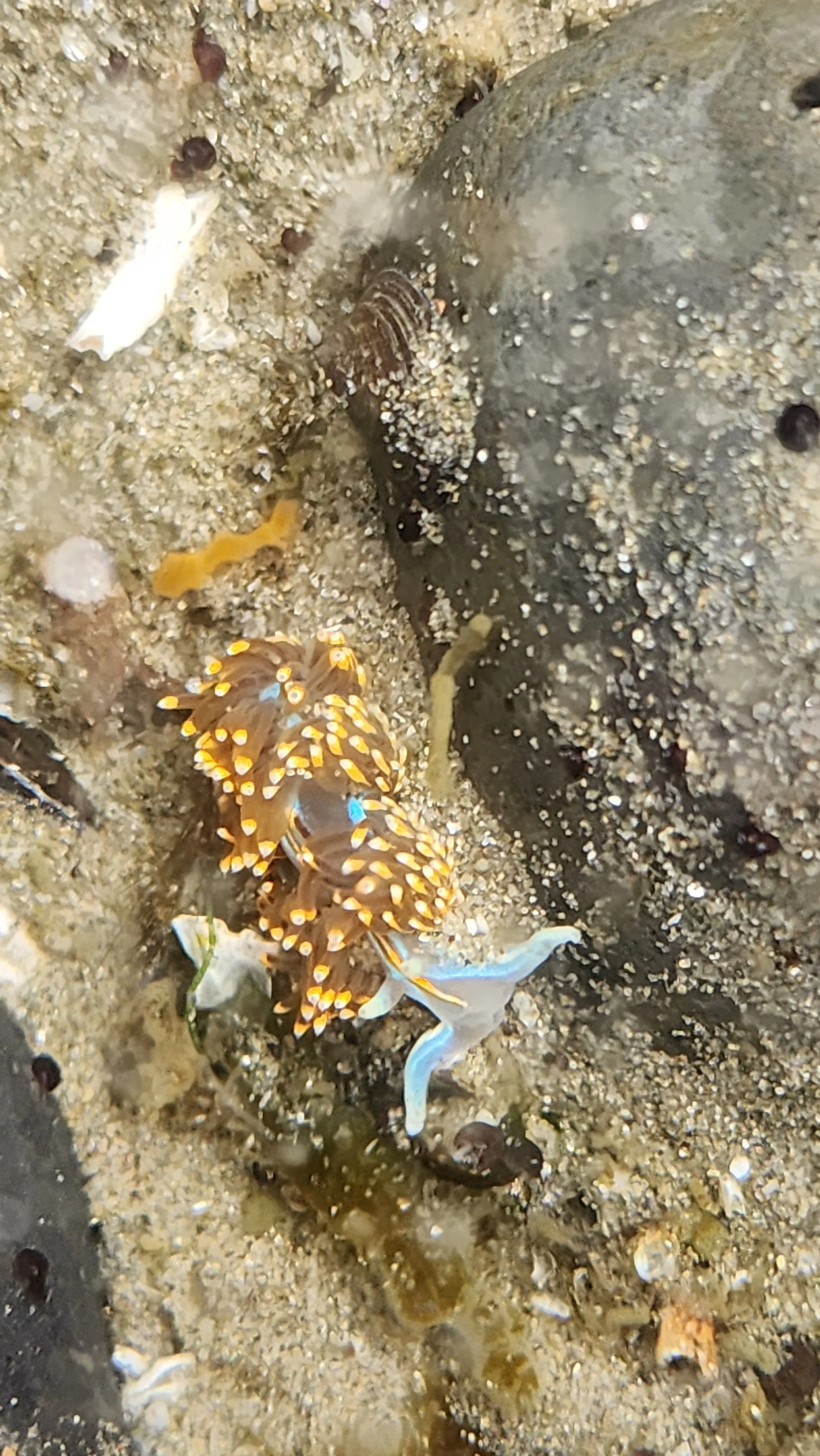Thick-Horned Nudibranch (Hermissenda crassicornis)
(photo credit: Zoe O’Toole)
Thick-horned nudibranch out of the water (photo credit: Zoe O’Toole)
Southern opalescent nudibranch - no white stripes on the cerrata (photo credit: Rachel Freeman)
Description: The thick-horned nudibranch is the most commonly found species of nudibranch at Haystack Rock. They have a translucent white body with a few iridescent blue stripes. Their body is covered with tentacle like hairs called cerata. These cerata have a white stripe and a bright orange tip that makes this species a little easier to spot. This coloring serves as a warning to other species that they can sting. They can grow to be 8 cm long! At Haystack Rock, the best time to look for thick-horned nudibranchs is in the spring and early summer. They are often in the tide pools on the south side of Haystack Rock or near The Needles.
Habitat: Thick-horned nudibranchs range from southern Alaska to northern California. They live in low intertidal to subtidal zones and can be found in rocky, sandy, or eel grass habitats.
Diet: These nudibranchs have the unique adaptation to be able to eat the toxic tentacles of sea anemones and use that toxin as their own defense system. They also eat hydroids and bryozoans.
Tide Pool Tidbits:
Thick-horned nudibranchs are expert recyclers! When they eat creatures like anemones that have stinging cells (called nematocysts) inside them, they repurpose these cells into their own body to defend themselves from predators.
A very territorial species, they are known to become violent if they venture too close to each other.
Thick-horned nudibranchs are also known as northern opalescent nudibranchs. They have a close relative called the southern opalescent nudibranch (Hermissenda opalescens) that, until recently, was thought to be the same species. This look-a-like species ranges from California to Mexico but has been seen in Oregon as well. The best way to tell the difference is by the cerata - if it has a white stripe on each cerata, it’s a northern opalescent (thick-horned).
Reference: Walla Walla University




